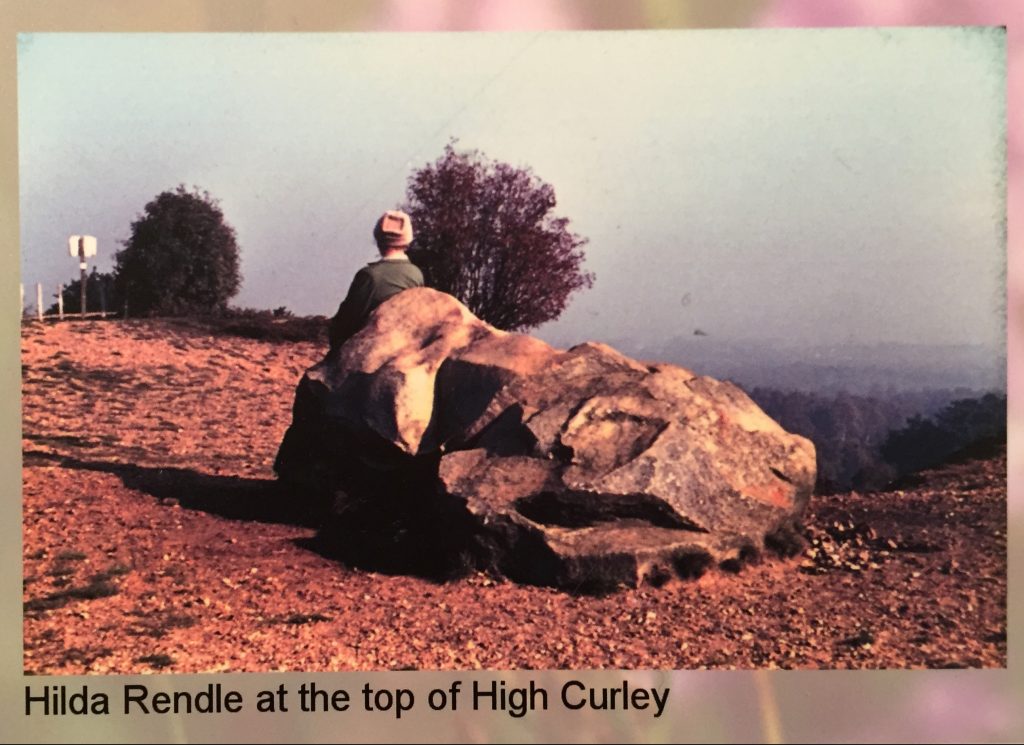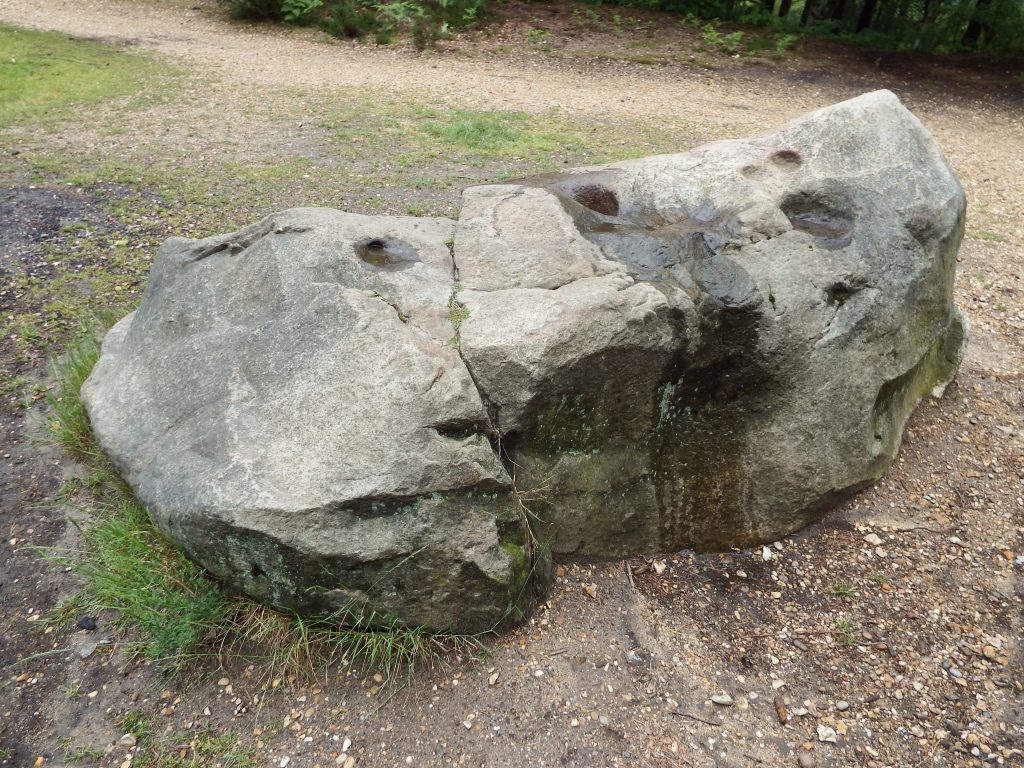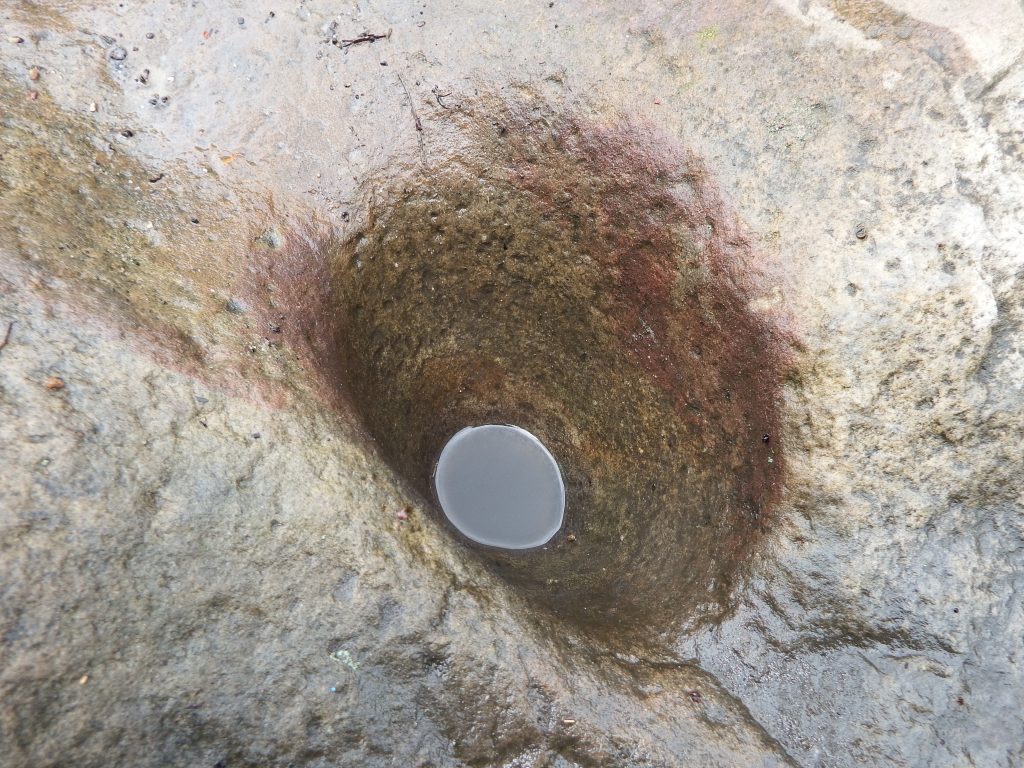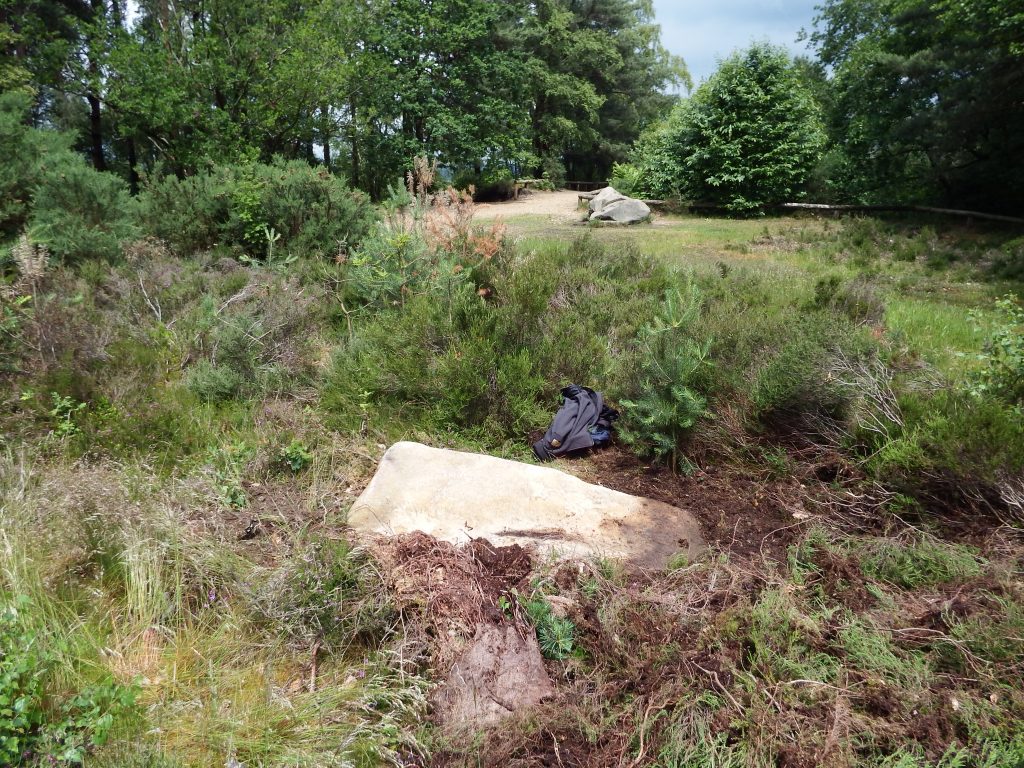https://leylinesdecoded.co.uk/2019/07/19/a-possible-standing-stone-on-high-curley-hill/
It has recently been pointed out to me by a fellow researcher, David Fernleigh, that if my NEWLANDS LINE is extended as a backsight from my base point at Whitmoor Barrow, there is a clear line of sight for some 7.2 miles across flat countryside to High Curley Hill near Lightwater village. This line is orientated to the mid-winter sunrise in the south-east and the backsight is to the mid-summer sunset in the north-west. The two opposing bearings align because they fall within the critical band of latitude which passes through the site of Stonehenge where a similar coincidence of sighting may be found.
It is unfortunate that the view toward Whitmoor is now obscured by mature trees, many of which are evergreen pines. The old photograph below is copied from a notice board at the Surrey Heath Museum and shows that there were once uninterrupted views to the far horizon. This sarsen stone is unusual; although there are other sarsens in this area this is the most outstanding example.
On my second visit to the hill, I noticed a strange indentation in the sarsen; in the photograph below a conical depression can be seen in the centre. There are other depressions but I believe these were created by root growth when the sandstone was being formed and had not yet solidified into the hard rock we now see.
This depression is obviously man-made. It is very smooth and regular, unlike any of the natural features. The remaining rainwater conceals an evenly dished base. At the surface it is about 15 centimetres in diameter and is some 16 cm deep. I have no idea of the age or purpose of this feature.
But this stone, although interesting, is not on the alignment, so further site investigation was required. The summit of the hill is a flat plateau at a height above sea level of around 420 feet. The summit is at the end of a ridge extending from the west and there are views to the horizon in all directions apart from along this ridge. It would surely have been of significance to prehistoric peoples with its flat top measuring approximately 140 metres by 40 metres wide offering panoramic views to horizons some thirty or more miles away.
Taking a ranging rod; a trowel; and a pruning saw; my next visit was concentrated on the area where the backsight of the alignment crossed the hill about 44 metres from the sarsen. The area around the sarsen and out to the viewing point in the north-west is well-trodden and clear of scrub, but coming back towards the south-east the ground has a dense covering of heather and gorse. Working my way from the alignment back north-west towards the sarsen I stumbled across the corner of another sarsen just visible through the growth. The pruning saw proved ideal for ripping through the covering of heather roots to reveal a large recumbent stone. The next photograph shows the relationship between the two sarsens, the distance between them is about 21 metres, and the recumbent stone is about 27 metres from the alignment, a very small error over seven miles and without investigation of the rising and setting of the sun at this elevation.
This photograph below is all I have been able to expose to date. This is a public country park and I did not want to be seen digging around the stone to ascertain its extent, besides which at my age, the effort to get this far was quite crippling. The exposed surface measured some six feet long by 2.5 feet wide (1.8m x 1.2m). Probing the edges did not help in determining the depth or limits of the stone.
As it is so close to the mid-summer sunset alignment, I am going to be so bold as to suggest the possibility that this sarsen was once a standing stone fallen in antiquity.
The pale corner is just visible on Google Earth at 51°20’45.41″N 0°41’30.92″W. The altitude is given as 411 feet which gives a clear line of sight back to Whitmoor Barrow. This is best viewed in Google Earth by selecting June 2018 in the ‘Historic Imagery’ option.
It now needs younger and fitter researchers, and with the permission of Surrey Heath Borough Council, to undertake a proper archaeological dig. I would love to see the whole plateau subjected to examination, at the very least by ground penetration radar.
Best access to this site is from the public car park in the Lightwater Country Park off High View Road, Lightwater, postcode GU18 5YF.






